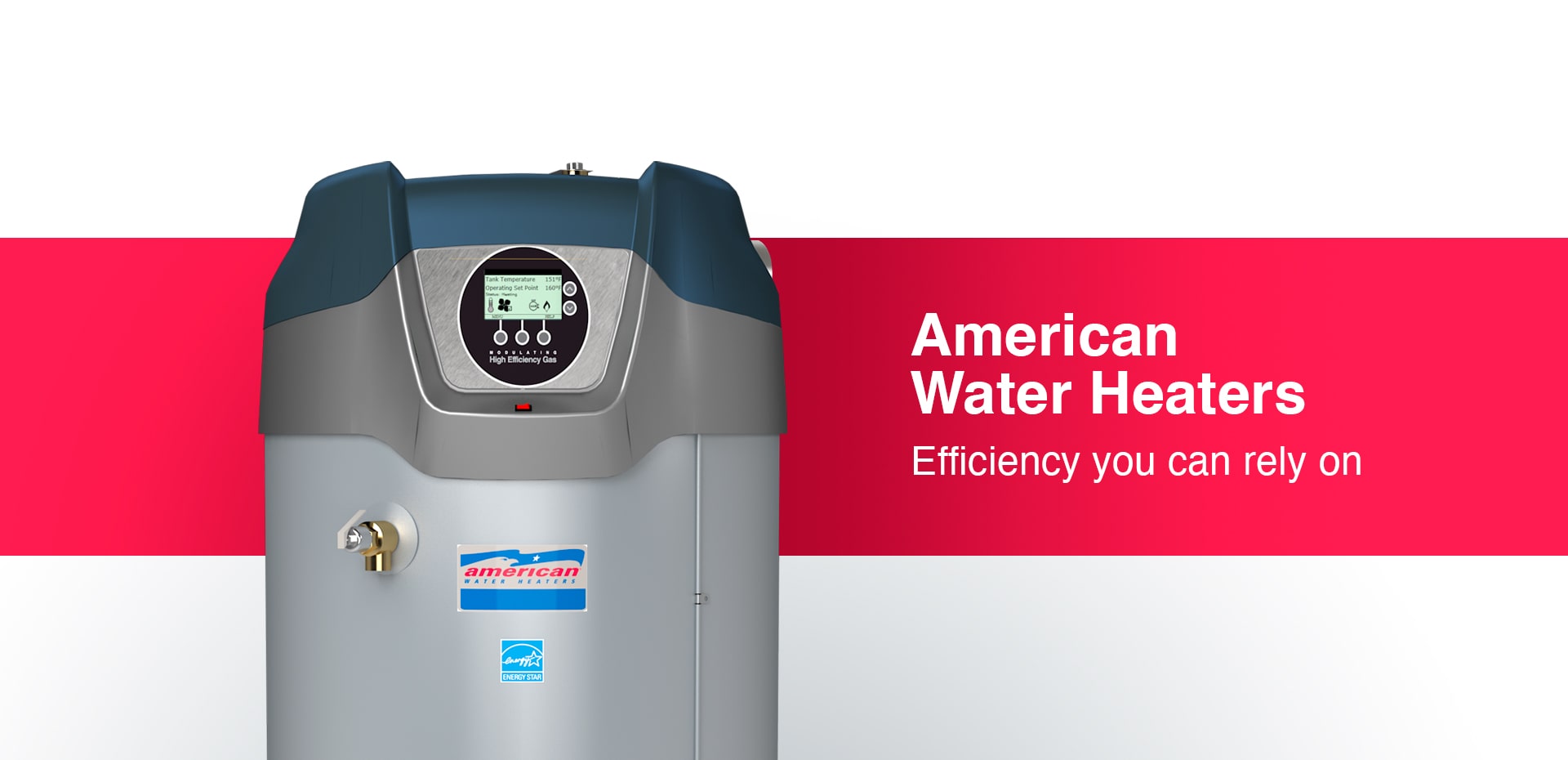Are you wondering what the ideal temperature setting is for your American water heater? It’s a question that many homeowners face, and getting it right can make a big difference in your daily life.
Choosing the correct temperature not only ensures comfort but also impacts energy bills and safety. Too hot, and you risk scalding; too cold, and you might not have the comfort you desire. We’ll dive into everything you need to know about setting the perfect temperature for your American water heater.
By the end, you’ll feel confident in making a choice that keeps your home safe, efficient, and comfortable. Stick around to discover the best practices and expert tips tailored just for you.
Credit: www.americanwaterheater.com
Page Contents
- 1 Ideal Temperature Range
- 2 Factors Influencing Temperature Choice
- 3 Adjusting The Water Heater
- 4 Benefits Of Proper Temperature Setting
- 5 Troubleshooting Temperature Issues
- 6 Comparative Analysis: Tank Vs. Tankless Heaters
- 7 Future Trends In Water Heater Technology
- 8 Frequently Asked Questions
- 9 Conclusion
Ideal Temperature Range
The best temperature for a water heater is between 120°Fand 140°F. This range keeps water hot but not too hot. At 120°F, water is safe and saves energy. It also stops germs from growing. But some people like hotter water. They might set it at 140°F. This is okay, but it can cause burns. Always be careful with hot water.
Children and older people need special care. Water at 140°Fcan burn skin fast. So, setting the heater at 120°Fis safer for them. Checking the water temperature is easy. Just use a thermometer under the tap. Adjust the heater if needed. It’s simple and keeps everyone safe.
Factors Influencing Temperature Choice
Cold areas need hot water more often. Warm places may need less heat. Seasons change needs too. Winter needs more heat than summer. Climate affects how much heat you want.
Using less heat saves energy. Saves money too. Lower temperatures can help the planet. Hot water costs more money. Smart choices can save energy.
Hot water can be dangerous. Burns hurt people. Lower temperatures are safer. Children need safer settings. Older folks do too. Safety first for everyone.
Adjusting The Water Heater
Begin by finding the temperature dial on the heater. Turn off the power supply before adjusting. Use a screwdriver to open the panel. Check the current temperature setting. Adjust the dial to the desired temperature. Make small changes to avoid overheating. Close the panel securely. Turn the power back on. Wait for a few hours to check the water temperature.
- Screwdriver
- Safety gloves
- Temperature gauge
- Flashlight
Setting the temperature too high can be unsafe. Forgetting to turn off power can cause shocks. Not securing the panel can lead to damage. Always check for leaks after adjustments. Avoid using rusty tools. Ensure the dial is turned gently. Ignoring the manufacturer’s instructions can void warranties.

Credit: www.youtube.com
Benefits Of Proper Temperature Setting
Setting the right temperature makes water feel just right. Warm showers are soothing. Too hot can burn. Too cold can shock. The right setting is important for everyone. Kids and elderly need extra care. Keeping it just right keeps everyone happy.
Saving money is easy with the right setting. Water heaters use lots of energy. Lowering the temperature cuts costs. Energy bills can be less. Families can save more each month. Every penny counts. Smart choices lead to big savings over time.
Appliances last longer with care. Proper temperature settings help. Too high can damage heaters. Regular settings reduce wear and tear. Less stress means longer life. Fewer repairs save money. Happy heaters work best and last longer.
Troubleshooting Temperature Issues
Water feels too hot or too cold? This can be a sign. You might see steam from hot water. Or, you shiver from cold showers. Kids might complain. They feel water is not right. Energy bills might go up. This can mean inefficient heating. Rusty water can also appear. It shows corrosion in the heater. These signs need attention. Fix them soon for comfort.
Check the water heater dial. Set it to 120°F for safety. Use a thermometer to test water. It should match the dial. If it doesn’t, call a professional. Clean the heater. Sediment can affect temperature. Flush the tank once a year. This helps maintain efficiency. Replace old parts if needed. Regular maintenance is key. It keeps your heater working well.
Comparative Analysis: Tank Vs. Tankless Heaters
Tank heaters often have a simple dial for temperature. You turn it to set the heat. Tankless heaters use digital controls. They show the exact temperature. This makes adjustments easier. Tank heaters can be less precise. The water heats slowly. Tankless models heat water instantly. This means precise control over the temperature. Digital settings are easier to manage. Kids can understand them too.
Tank heaters are usually cheaper to buy. They are easy to install. But, they take up more space. They can run out of hot water. Tankless heaters save space. They offer endless hot water. But, they cost more upfront. Installation is harder. Each type has its benefits and drawbacks. Choose what fits your needs best.
Future Trends In Water Heater Technology
Water heaters are becoming smarter. Smart temperature control is a new feature. It lets you set the perfect heat level. No more guessing. You can control it using your phone. It’s easy and quick. Perfect for busy families. Keeps water at a safe temperature. Prevents burns. Saves energy too. Smart control makes life easier.
Energy efficient models are getting popular. They use less power. Save money on bills. Good for the environment. They are designed to heat water faster. Use less gas or electricity. Keeps homes warm without high costs. Many people like these models. Easy on the wallet. Great for saving energy. Helping the planet.

Credit: americanlatam.com
Frequently Asked Questions
What Is The Ideal Water Heater Temperature?
The ideal water heater temperature is typically between 120°F and 140°F. This range ensures safety and energy efficiency. At 120°F, the risk of scalding is reduced, while 140°F helps prevent bacterial growth. Adjust according to your household needs, but always prioritize safety and energy conservation.
How Do I Adjust My Water Heater Temperature?
To adjust your water heater temperature, locate the thermostat control, usually near the bottom. Turn the dial to your desired setting, ideally between 120°F and 140°F. Wait a few hours and test the water to ensure it’s at the correct temperature.
Always follow safety precautions when adjusting settings.
Why Is My Water Heater Temperature Fluctuating?
Fluctuating water heater temperatures can be due to a faulty thermostat or sediment build-up. Check for any visible issues or unusual noises. Regular maintenance, such as flushing the tank, can prevent sediment build-up. If the problem persists, it may be time to consult a professional for repairs or replacement.
Can A High Setting On My Water Heater Save Money?
Setting your water heater too high can increase energy costs. Higher temperatures mean the heater works harder, consuming more energy. A setting between 120°F and 140°F balances comfort and efficiency. Regular maintenance and insulation can further enhance savings and prolong the heater’s lifespan.
Conclusion
Setting the right temperature for your American water heater is crucial. Too high can cause burns; too low can invite bacteria. Aim for the safe zone: 120°F. Protects your skin and saves energy. Regular checks ensure consistent temperature. Avoid surprises with sudden hot or cold water.
Consider your household needs. Adjust accordingly for comfort and safety. Always consult your heater’s manual. Stay informed. Safe water temperature keeps everyone happy. Enjoy peace of mind with the right setting. Prioritize safety and efficiency in your home. Make smart choices for your water heater settings.
